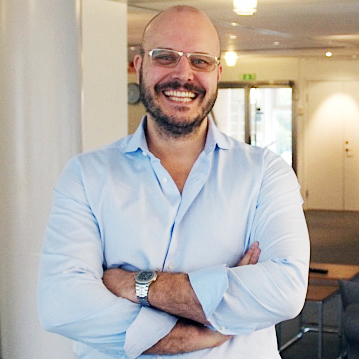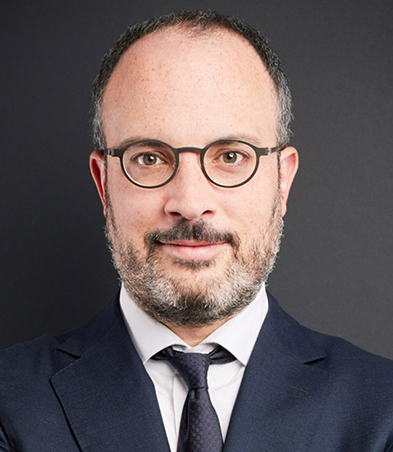
Interview with Nikola Teofilovic, CEO of Twintip Insights, a business intelligence company
Hi Nikola, what is your background and what is included in your current role at Twintip?
I studied International Business with a focus on Russian Affairs at Uppsala University in Sweden. I have been working in the technology industry since 1999 in executive positions. I became the CEO of the second largest Nordic e-commerce company, their subsidiary in Norway, in 1999, and have been in that industry since.
Currently, I am a partner and CEO at Twintip, where I lead a team that consists of 13 members. My role involves motivating my team, business development, making strategic decisions, as well as product development from a strategic perspective. As well, I am responsible for educating clients at seminars and other events, as well as meeting with our biggest clients to help them reach their goals by connecting social data to important KPIs (key performance indicators).
I inform our clients about how they can use social data to make their market span more efficient by identifying partner strengths and weaknesses, and using that information for important decision-making. We use social data to connect it to hard values instead of soft values; traditionally, social monitoring tools have only been used for reactive decisions and insights. However, we are trying to help C-level executives make proactive decisions based on the social data to help them make their market span more efficient.
What differ Twintip from other media monitoring and business insights companies in Scandinavia?
Twintip is developing, and becoming more of a social intelligence company than a social monitoring company, although we are still providing social media monitoring because there is a demand for it. However, we focus more on analyzing the data and giving clear calls to action to our clients versus simply using social data in a traditional way. Instead of focusing only on posts, we focus on conversations and identifying behaviors. We have delivered more than 300 analyses on social data, and we also have the best data.
Our services are targeted to strategic decision makers, such as CEOs and marketing directors, to help them make strategic decisions. Instead of focusing on simply what was said about their brand on social media, we cross tabulate our data with other important data sources, such as Google data, transaction data and CRM data; and I strongly believe that decisions are going to be data driven in a couple of years.
We have convinced C-level executives that we can help them make strategic decisions based on the data we provide. We have allowed our clients to know more about their own customers and competitors to help them make better decisions. After all, the more you know, the better decisions you will be able to make.
Which type of companies benefit from your services?
We are strong in banking, finance, telecommunication operators, FMCGs (fast moving consumer goods) and media production companies (national broadcasting network that produce television shows).
You have recently added Facebook Topic Data. In what way is that important to your customers?
Facebook has a base that is big enough to provide valuable insight about the country. Compared to traditional research through physical and web queries and telephone interviews, which can be biased simply by asking the questions, Facebook allows us to listen to spontaneous and non-incentive driven conversations. For the research industry, Facebook Topic Data provides a completely new way to work by offering important and interesting data.
What are your greatest challenges ahead at Twintip, when it comes to serving your customers business insights and analysis?
Our greatest challenge alongside the industry is to get C-level executives in blue chip companies to understand how important these data sources are. Most CEOs in these types of companies were born in the 1950s and 1960s, and have not grown up with the Internet, mobile phones, etc. Therefore, there is a knowledge gap, which is a challenge to get through to them and make them see the importance of our services. Innovation always has resistance in the beginning because humans are used to our patterns, and are not that open to change. Changing a market always requires a hard fight to educate the clients, and explain why this way is better than the traditional way. However, I think we have done a lot of good work in convincing our clients by providing hard evidence of our results, especially for the relatively small company that we are.
Can you give specific examples where one or more of your clients have made changes in their communication, organization or similar, based on the information or analysis you provided?
One of the four biggest banks in Sweden uses our social monitoring data to create a publication accountant schedule to know when clients are talking about their mortgages, savings, changing banks, etc., on a daily and monthly basis, and even based on the time of day. Analyzing the conversations of clients when they are discussing these financial topics, as well as studying their behaviors and the driving forces behind their decisions, has helped this bank make better decisions about communicating with their clients.
Which social platform do you see has the most potential in the future?
I believe that Facebook as a data source has the most potential in the future because they have so much information about their users, such as where they are located, their relationship status, work status, age, etc. However, Google search engine and Google analytics also has a lot of information and a good volume of data. Furthermore, LinkedIn is beneficial for a good business perspective, and Snapchat is good for targeting young people.
Are there any social platforms that are closed today that you would be interested in tapping into for monitoring that would benefit your customers?
LinkedIn and Instagram. We hope that Instagram will distribute their data in the same way as Facebook Topic Data.
What kind of data or media that you do not have monitoring on today, can be interesting in the future?
In the future, it would be interesting to have good photo recognition software, although the technology is not there yet. That would be helpful to find, for example, a brand that was featured in a photo of an influential blogger, yet not mentioned in the caption.
How do you think the media monitoring and social intelligence industry will change in the next 5-10 years?
In the next 5-10 years, we will move from reactive to proactive; we will challenge the traditional research models to gather information and answer questions. Social media monitoring tools will focus on analyzing behaviors and making smart decisions based on data, instead of just focusing on posts. The data will be more qualitative than quantitative.
By Renata Ilitsky


